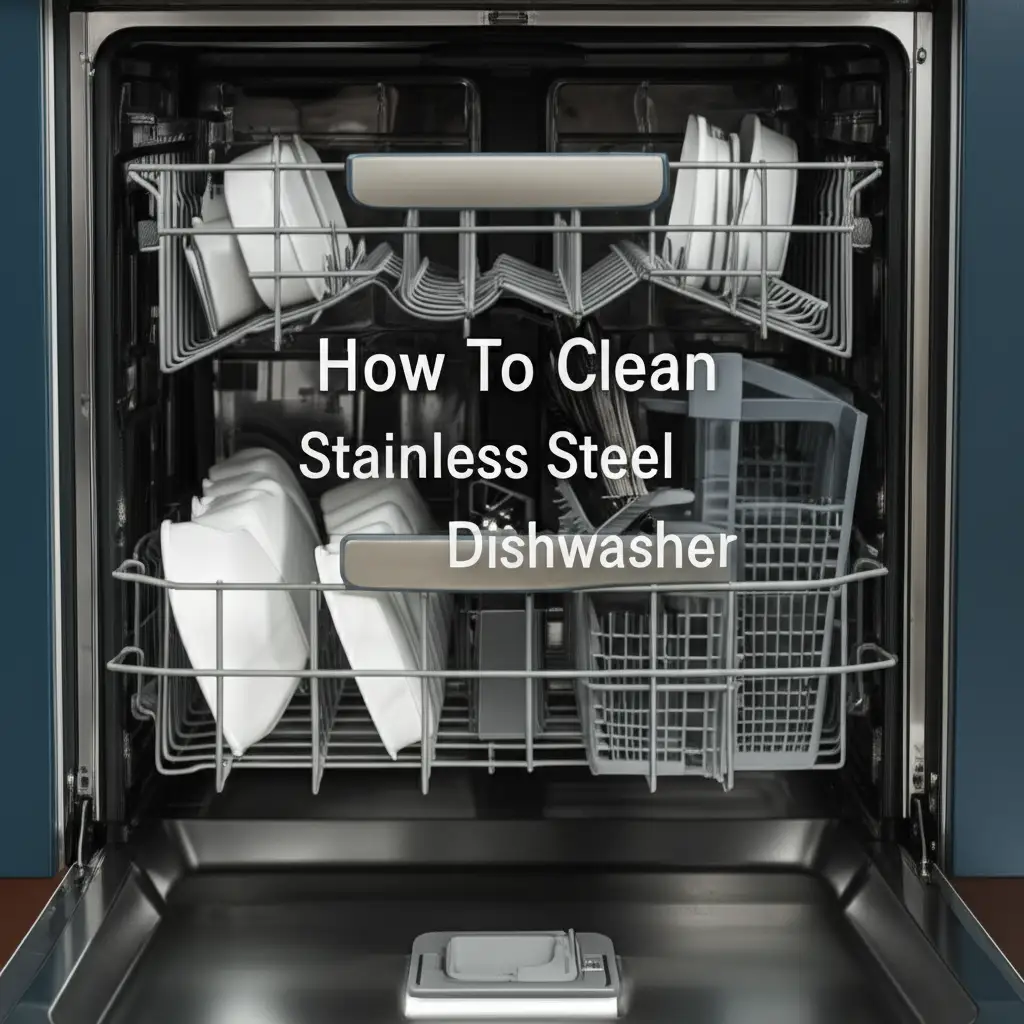· Appliance Care · 19 min read
How To Clean Cusinart Coffee Maker

Unlock Fresh Brews: How to Clean Your Cuisinart Coffee Maker
Do you love starting your day with a perfect cup of coffee? Many people do. Your Cuisinart coffee maker works hard every day to deliver that satisfying brew. But over time, coffee oils and mineral deposits can build up. This affects the taste of your coffee. It can also shorten your machine’s life. Regular cleaning keeps your coffee maker working at its best. It also ensures every cup tastes fresh and delicious.
Cleaning your Cuisinart coffee maker is not difficult. It requires a few simple steps and common household items. This article will guide you through the process. We cover everything from daily rinses to deep descaling. You will learn how to maintain your machine properly. This helps you enjoy excellent coffee for years to come. Let’s make sure your Cuisinart stays in top shape.
Takeaway
- Daily Care: Rinse removable parts after each use to prevent oil buildup.
- Weekly Cleaning: Wash detachable components with warm, soapy water.
- Monthly Descaling: Use vinegar or a descaling solution to remove mineral deposits.
- Regular Maintenance: Follow manufacturer guidelines for best performance and longevity.
To clean a Cuisinart coffee maker effectively, regularly rinse removable parts daily and wash them with soapy water weekly. Perform a monthly descaling cycle using a vinegar solution or a commercial descaler to remove mineral buildup, ensuring fresh-tasting coffee and prolonging the machine’s lifespan.
Why Cleaning Your Cuisinart Coffee Maker Matters
Maintaining your Cuisinart coffee maker is important. It directly impacts your coffee’s taste. A dirty machine creates bitter or off-tasting coffee. Residue from old coffee oils clings to internal components. These oils become rancid over time. They transfer their unpleasant flavors to new brews. This means your fresh beans will not taste as good as they should. You want your coffee to taste amazing.
Beyond taste, cleaning protects your appliance. Mineral deposits, primarily from hard water, accumulate inside. This buildup clogs water lines and heating elements. It reduces your coffee maker’s efficiency. This also puts strain on its parts. Over time, this can lead to malfunctions or even breakage. Proper cleaning prevents these issues. It helps your Cuisinart last longer.
Regular cleaning also ensures hygiene. A warm, moist environment encourages mold and bacteria growth. This is especially true if water sits in the reservoir. Mold can grow unseen inside the machine. Breathing mold spores is unhealthy. It can cause allergic reactions. Cleaning removes these harmful contaminants. It provides a safe brewing environment. You want clean, safe coffee.
Think of cleaning as an investment. It is an investment in better-tasting coffee. It also extends your appliance’s life. It keeps your family healthy. A few minutes of cleaning time saves you money and improves your daily coffee experience. We take care of our coffee makers.
Essential Daily and Weekly Cleaning Steps
Starting with regular cleaning habits saves time later. Daily and weekly cleaning prevents major buildup. These simple steps keep your Cuisinart fresh. They are quick and easy to do.
Daily Quick Rinse
After each use, take a few moments to rinse the removable parts. This is a simple but effective step. It washes away fresh coffee oils and grounds. These residues are easier to remove when wet. They become harder to clean once dry.
- Empty the carafe: Pour out any remaining coffee.
- Rinse the carafe: Rinse with warm water.
- Rinse the filter basket: Remove the filter basket. Rinse it thoroughly under running water.
- Wipe down the exterior: Use a damp cloth to wipe the outside. This removes splashes and fingerprints.
This quick rinse prevents coffee oils from drying onto surfaces. It keeps your machine looking good. It also helps maintain good hygiene. This prevents a lot of future cleaning.
Weekly Deep Cleaning of Removable Parts
Once a week, give the removable parts a more thorough cleaning. This ensures all lingering residues are gone. It prevents stubborn stains from forming. This step is also quick.
- Disassemble parts: Take out the filter basket, carafe, lid, and any other removable parts.
- Wash with soapy water: Use warm water and a mild dish soap. Wash each part by hand. A soft brush helps with stubborn spots.
- Pay attention to the carafe lid: Coffee oils often collect in the crevices of the lid. Ensure you clean these areas well.
- Rinse thoroughly: Rinse all parts completely. Make sure no soap residue remains.
- Air dry: Allow all parts to air dry completely before reassembling. This prevents moisture buildup and mold growth.
Remember, keeping these parts clean makes a big difference. It prevents unpleasant smells and tastes. For more general tips on cleaning a drip coffee maker, you can refer to this guide: how to clean drip coffee maker.
Deep Cleaning Your Cuisinart Coffee Maker with Vinegar
Descaling is the most important part of coffee maker maintenance. It removes hard water mineral deposits. These deposits clog your machine over time. Vinegar is a popular, natural descaling agent. It is effective and safe. I find it works wonderfully.
Preparing the Vinegar Solution
You will need white vinegar and water. Use equal parts of each. For most Cuisinart models, this means about two cups of white vinegar. Then add two cups of water. Some larger models might need more.
- Measure vinegar: Pour the white vinegar into the water reservoir.
- Add water: Fill the rest of the reservoir with water. The mixture should reach the “MAX” fill line.
- Mix gently: Swirl the reservoir gently to mix the solution. You want it well combined.
Never use apple cider vinegar. It contains sugars that can leave residue. Stick to plain white vinegar. It is acidic enough to break down minerals.
Running the Descaling Cycle
The process is similar to brewing coffee, but without coffee grounds. This allows the vinegar solution to clean all internal pathways. It is important to run a full cycle.
- Place an empty filter: Put a paper filter or the permanent filter into the filter basket. This catches any dislodged mineral flakes.
- Start brewing: Turn on your Cuisinart coffee maker. Let it complete a full brewing cycle. The vinegar solution will run through the machine. You might see some cloudy water or small flakes. This is normal. It means the descaling is working.
- Halfway pause (optional): Some Cuisinart models recommend pausing the cycle halfway. Turn off the machine for 20-30 minutes. This gives the vinegar more time to work on stubborn deposits. Then, turn it back on to finish the cycle. Check your Cuisinart manual for this specific recommendation.
The vinegar smell can be strong. This is temporary. It will dissipate once you rinse the machine. Do not worry about the smell lingering in your coffee.
Rinsing Away the Vinegar
Rinsing is crucial after descaling. You must flush out all vinegar and dislodged minerals. This ensures your next cup of coffee tastes pure. I always do several rinse cycles.
- Discard solution: Empty the carafe. Discard the vinegar solution and the filter.
- Fill with fresh water: Fill the water reservoir with clean, fresh water. Fill it to the “MAX” line.
- Run plain water cycles: Run at least two full brewing cycles with plain water. More if the vinegar smell persists.
- Empty and refill: Empty the carafe and refill the reservoir with fresh water between each rinse cycle.
- Air dry: Once rinsing is complete, leave the reservoir lid open. Allow the machine to air dry completely. This prevents any moisture from staying inside.
This comprehensive descaling process should be done monthly. If you have very hard water, do it every three weeks. Regular descaling keeps your Cuisinart in prime condition. For general cleaning information using vinegar and baking soda, see how to clean with vinegar and baking soda.
Alternative Descaling Solutions and When to Use Them
While vinegar is a popular choice, other options exist for descaling your Cuisinart coffee maker. Some people prefer commercial descalers. Others use baking soda for specific cleaning needs. Knowing your options helps you choose the best method.
Using Commercial Coffee Maker Descalers
Commercial descalers are designed specifically for coffee makers. They often work faster than vinegar. They also leave no lingering odor. These products contain acids that break down mineral buildup. Many Cuisinart owners prefer them for their convenience.
- Follow instructions: Always read the product label carefully. Each brand has specific dilution ratios and cycle times.
- Pour into reservoir: Add the recommended amount of descaler to the water reservoir. Fill the rest with water if required.
- Run cycle: Initiate a brewing cycle as you would with vinegar. Let the solution run through the machine.
- Rinse thoroughly: Perform several rinse cycles with fresh water afterward. This removes all chemical residues.
Commercial descalers are great if you dislike the vinegar smell. They can also be more effective for very heavy mineral buildup. They are readily available at most stores.
Baking Soda for Specific Cleaning
Baking soda is not a primary descaler for internal systems. Its alkalinity does not effectively break down mineral scale inside the pipes. However, baking soda is excellent for cleaning external parts. It also works well for scrubbing the carafe.
- For carafe stains: Make a paste with baking soda and a little water. Rub it on coffee stains inside the carafe. Let it sit for a few minutes. Then scrub gently with a sponge. Rinse thoroughly. This removes tough stains and odors.
- For removable parts: Mix baking soda with warm water. Soak filter baskets or lids in this solution. It helps remove stubborn coffee oils. Rinse well after soaking.
- Odor neutralization: Place an open bowl of baking soda near your coffee maker. This helps absorb any lingering odors between uses.
Baking soda is a gentle abrasive and a natural deodorizer. It complements a vinegar or commercial descaling routine. For more details on using baking soda for cleaning, check out this article: how to clean coffee maker with baking soda.
Cleaning Removable Parts and Carafe Deeply
Beyond the internal descaling, the removable parts of your Cuisinart coffee maker need regular attention. These components come into direct contact with coffee. They are prone to oil buildup and staining. Giving them a deep clean ensures your coffee tastes its best.
The Filter Basket and Lid
The filter basket holds the coffee grounds. Coffee oils can stick to its surface. The lid often accumulates splashes and condensation. Both need consistent cleaning.
- Remove and inspect: Take out the filter basket and its lid. Check for any stubborn coffee residue or discoloration.
- Soak if necessary: If there are dried-on grounds or sticky oils, soak the basket and lid in warm, soapy water for 15-20 minutes. This softens the grime.
- Scrub with a brush: Use a small brush, like a bottle brush or an old toothbrush, to scrub the mesh and crevices. Pay attention to the areas where coffee collects.
- Rinse thoroughly: Rinse under running water until all soap is gone. Ensure the mesh is clear.
A clean filter basket ensures water flows properly through the grounds. This leads to a better extraction and better-tasting coffee.
The Coffee Carafe
Your Cuisinart carafe can develop brown stains over time. These are from coffee oils. They can also hold onto stale coffee odors. Cleaning the carafe deeply removes these issues.
- Empty and rinse: Always empty and rinse the carafe after each use. This prevents coffee from drying on.
- Soap and warm water: For daily cleaning, use dish soap and a sponge. Scrub the inside and outside.
- Stubborn stains: For tough coffee stains, try a solution of warm water and a few tablespoons of baking soda. Fill the carafe with this mixture. Let it sit for 30 minutes to an hour.
- Scrub gently: Use a bottle brush or a sponge to scrub the inside. The baking soda helps lift the stains.
- Ice and salt method (for extreme stains): Add a few ice cubes, a tablespoon of coarse salt, and a splash of water to the carafe. Swirl vigorously. The ice and salt act as abrasives. This breaks down stubborn stains without scratching. Rinse very well afterward.
- Carafe lid: Don’t forget the lid. Coffee residue often collects in its rim and spout. Clean it thoroughly with a small brush.
Always ensure the carafe is completely dry before storing it. This prevents mildew.
Preventing Mold and Mineral Buildup in Your Cuisinart
Prevention is key to keeping your Cuisinart coffee maker clean. Mold and mineral buildup are common problems. Taking simple steps can greatly reduce their occurrence. This saves you time and effort in the long run. It also keeps your coffee delicious and safe.
Tips for Preventing Mold Growth
Mold thrives in damp, dark environments. Your coffee maker’s water reservoir and internal components are ideal spots. You can prevent mold with good habits.
- Empty the reservoir: Never leave water sitting in the reservoir overnight. After brewing, empty any remaining water.
- Air dry thoroughly: Leave the water reservoir lid open after use. This allows moisture to evaporate. Air circulation is important.
- Wipe down surfaces: Use a clean, dry cloth to wipe down the inside of the reservoir. This helps remove any lingering dampness.
- Regular deep cleaning: Stick to your monthly descaling and weekly cleaning schedule. This removes any nascent mold before it spreads.
- Check for mold: Periodically inspect inside the reservoir and around the filter basket. If you see black spots or slimy residue, clean it immediately. For specific instructions, refer to how to clean mold out of coffee maker.
These steps significantly reduce the risk of mold. A clean, dry environment discourages its growth.
Minimizing Mineral Buildup
Mineral buildup, or scale, comes from hard water. It looks like white, chalky deposits. It clogs pipes and impacts heating efficiency.
- Use filtered water: If your tap water is hard, use filtered water for brewing. This can be from a Brita pitcher or a refrigerator filter. Filtered water has fewer minerals. This slows down scale accumulation.
- Regular descaling: Follow the recommended descaling schedule. Monthly descaling is generally sufficient for most homes. If you notice a slower brew time or more frequent cleaning needs, increase descaling frequency.
- Inspect water lines: During deep cleaning, visually inspect the water lines where possible. Look for any visible buildup.
- Don’t overfill the reservoir: Only add the water you need for your current brew. This minimizes water sitting and evaporating, leaving mineral deposits behind.
By being proactive, you keep your Cuisinart clean and functional. You also ensure great-tasting coffee every time.
Troubleshooting Common Cuisinart Cleaning Issues
Even with regular cleaning, you might encounter some issues. Knowing how to address them helps you keep your Cuisinart performing well. These are common problems I have seen.
Persistent Odors or Tastes
Sometimes, a strange smell or taste lingers in your coffee. This happens even after cleaning. This often means something was missed.
- Check all removable parts: Did you clean the carafe lid thoroughly? Coffee oils can hide in small grooves. Disassemble it if possible and scrub all parts.
- Run extra rinse cycles: After descaling, run two or three extra plain water cycles. This ensures all vinegar or descaler residue is gone.
- Baking soda soak for carafe: For stubborn odors in the carafe, fill it with warm water and a few tablespoons of baking soda. Let it sit overnight. Rinse well in the morning.
- Consider a stronger descaler: If the metallic or bitter taste persists, hard water buildup might be very severe. A commercial descaler could be more effective than vinegar for heavy scale.
A clean smell indicates a truly clean machine. Trust your nose.
Slow Brewing or Clogged Machine
A slow brewing cycle or a machine that stops brewing is usually a sign of mineral buildup. The internal water lines are becoming blocked.
- Intensive descaling: Perform an intensive descaling cycle. Use a stronger vinegar solution (e.g., 1 part vinegar to 1 part water, or even straight vinegar if recommended by Cuisinart for severe cases). Pause the cycle for 30-60 minutes halfway through. This gives the descaler more time to work.
- Repeat descaling: You might need to repeat the descaling process two or three times. Do this until the brewing speed returns to normal.
- Check the water filter: If your Cuisinart has a charcoal water filter, replace it regularly. A clogged filter can restrict water flow.
- Tap water quality: Consider switching to filtered or distilled water. This helps prevent future clogs if your tap water is extremely hard.
Do not try to clear clogs with sharp objects. This can damage internal components. Always rely on chemical descaling.
Mold Spots Appearing After Cleaning
Finding mold after cleaning is frustrating. It means some moisture was left behind.
- Ensure complete drying: After every wash or descaling, leave all parts disassembled. Allow them to air dry completely. The reservoir lid should stay open.
- Increase air circulation: If your kitchen is humid, consider running a fan near the coffee maker. This helps with drying.
- Store parts separately: If space allows, store the filter basket and carafe lid separately until fully dry. Then reassemble.
- Daily wipe-down: Get into the habit of wiping down the inside of the reservoir with a paper towel after each use. This removes any lingering water droplets.
Consistent air drying is the best defense against mold. It is a simple step that makes a big difference.
Extending the Life of Your Cuisinart Coffee Maker
Cleaning your Cuisinart coffee maker is not just about taste. It is also about longevity. Proper care significantly extends your appliance’s lifespan. You want your investment to last. These tips help ensure your Cuisinart serves you for many years.
Adhering to the Cleaning Schedule
Consistency is vital for appliance longevity. Follow a regular cleaning schedule.
- Daily Rinses: Make it a habit to rinse the carafe and filter basket every day after brewing. This prevents coffee oils from drying and becoming stubborn stains.
- Weekly Washes: Once a week, commit to washing all removable parts with warm, soapy water. This removes residues that daily rinses might miss.
- Monthly Descaling: Set a reminder for monthly descaling. This is the most crucial step for preventing internal clogs from mineral buildup. If you live in an area with hard water, consider descaling every three weeks.
A consistent routine avoids severe problems. It keeps your machine running smoothly. This also means fewer expensive repairs or replacements.
Using the Right Water
The type of water you use impacts your coffee maker’s health.
- Filtered Water: If your tap water is hard (high in minerals), use filtered water. This dramatically reduces mineral buildup inside the machine. Filters like Brita pitchers or refrigerator dispensers work well.
- Avoid Distilled Water (for regular use): While distilled water contains no minerals, it lacks the minerals that contribute to coffee flavor. Using it constantly can also sometimes affect how some coffee makers sense water. It is excellent for a final rinse during descaling.
- Check your water hardness: You can buy water hardness test strips. Knowing your water’s hardness helps you adjust your descaling frequency.
Using good quality water lessens the burden on your coffee maker. It also improves your coffee’s taste.
Proper Storage and Handling
How you store and handle your Cuisinart also affects its life.
- Store dry: Always ensure your coffee maker is completely dry before storing it for extended periods. This prevents mold and mildew. Leave the reservoir lid open.
- Protect from extreme temperatures: Do not store your coffee maker in areas with extreme heat or cold. These conditions can damage electronic components or plastic parts.
- Handle with care: Be gentle when inserting and removing parts. Avoid forcing components. This prevents cracks or breaks.
- Read the manual: Your Cuisinart coffee maker comes with a user manual. It contains specific care instructions for your model. Read it. It may have unique descaling alerts or component care tips.
By treating your Cuisinart well, it will serve you for many great coffee moments. These practices extend its operational life. They ensure optimal performance.
FAQ Section
How often should I clean my Cuisinart coffee maker?
You should rinse removable parts daily and wash them weekly with soap and water. Descale your Cuisinart coffee maker monthly using vinegar or a commercial descaler. If you have very hard water, descaling every three weeks is better. This schedule prevents mineral buildup and maintains coffee quality.
Can I put Cuisinart coffee maker parts in the dishwasher?
Some Cuisinart removable parts, like the carafe and filter basket, are often dishwasher safe on the top rack. Always check your specific Cuisinart model’s user manual before putting any part in the dishwasher. Washing by hand with warm, soapy water is always a safe alternative and ensures thorough cleaning.
What should I do if my Cuisinart coffee maker is still brewing slowly after descaling?
If your Cuisinart is still brewing slowly after descaling, the mineral buildup might be severe. Run another descaling cycle, possibly pausing it halfway for 30-60 minutes to allow the solution more time to work. Consider using a stronger commercial descaler. Also, check if your water filter needs replacing.
Is it safe to use vinegar to clean my Cuisinart coffee maker?
Yes, using white vinegar is a safe and effective way to clean and descale your Cuisinart coffee maker. Its acidity breaks down mineral deposits and coffee oils. Always dilute the vinegar with water (usually 1:1 ratio) and run several plain water rinse cycles afterward to remove any lingering vinegar smell or taste.
How do I remove stubborn coffee stains from my Cuisinart carafe?
For stubborn coffee stains, fill the carafe with warm water and a few tablespoons of baking soda. Let it soak for 30 minutes to an hour, then scrub with a bottle brush. For very tough stains, add ice cubes, a tablespoon of coarse salt, and a little water to the carafe and swirl vigorously as an abrasive.
What causes mold in a coffee maker and how can I prevent it?
Mold in a coffee maker is caused by lingering moisture and warmth. Prevent it by emptying the water reservoir after each use and leaving the lid open to air dry. Also, wipe down the inside of the reservoir with a dry cloth. Regular deep cleaning and ensuring all parts are dry before reassembly also prevent mold growth.
Conclusion
Cleaning your Cuisinart coffee maker is simple. It is an important task for every coffee lover. Regular maintenance keeps your machine working perfectly. It ensures every cup of coffee tastes great. You learn to handle daily rinses, weekly washes, and crucial monthly descaling. This protects your investment. It guarantees a fresh, clean brew every time.
Remember the key steps. Rinse removable parts daily. Wash them weekly with soap. Descale your Cuisinart coffee maker monthly with vinegar or a commercial solution. Always rinse thoroughly afterward. Preventing mold and mineral buildup saves you trouble. Following these steps helps your machine last longer. Enjoy pure, delicious coffee from a clean Cuisinart. Make cleaning a regular part of your coffee ritual. Your taste buds will thank you.
- Cuisinart cleaning
- coffee maker maintenance
- descaling coffee maker




